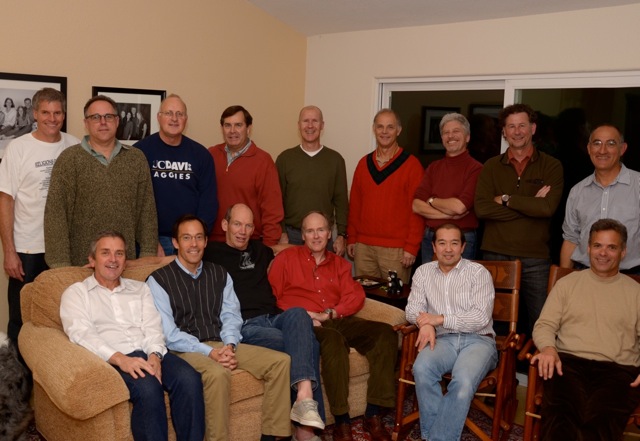We came expecting a dank room with a lumpy mattress on the floor, adolescent guards at the ready, and beans and rice for sustenance. Armando was only able to conjure up the beans and rice (courtesy of Picante), but when paired with his homemade tamales, green salad, and a pleasing berry and ice cream dessert selection, we were most forgiving. The smooth brandy from Roy, and the selection of Latin beers, also helped.
Armando never circled back to his father’s barroom antics (we’ll wait for that next time), but he did impress us with his tales of whales (and their 10-foot appendages), Fresnel lenses (yes, that was young Armando in the lighthouse), and a 20-year men’s group that’s still going strong. Some of us were even invited into his “man cave,” whose artifacts and animals (those were California Kingsnakes!) might have entertained us all evening.
The Book
Had we picked any other of Armando’s book choices, we would likely have been pleased. But as it was, we felt merely informed by our reading of Marquez’ account of the 1990 kidnappings in his native Colombia. Our criticisms centered around the limits Marquez imposed on his reporting: he spent too much time lionizing the hostages and their high society families and friends, and too little time exploring the class tensions, the widespread violence, the political instability, and the shadow of Uncle Sam—all of which contributed to Pablo Escobar’s desperate bid for leverage as he sought to avoid extradition and protect his family.
Fortunately, Stan happily filled in some of the missing context! (How about we next pick a book about Mongolia and see if Stan also spent time there in 1972 playing music and marveling at the abundance of cocaine?) I'm not sure I get Stan's connection to Havana Nocturne, and I know Peter is still smarting from George's generalizations about where all the stable democracies are located (none south of the equator, apparently). As we went around the table, no one was quite as critical as I, but the rating still fell solidly into the mid-range, with the final result a disappointing 4.9.
Next Up
Our next selection is David Wroblewski’s The Story of Edgar Sawtelle. We will take off the month of January and instead travel up to Tahoe for a weekend of skiing and bonding (not bondage, Garth). Food and beverage assignments are coming, so be sure to RSVP if you haven’t already. So far, 14 are confirmed, and we now have a second cabin reserved for the overflow.

